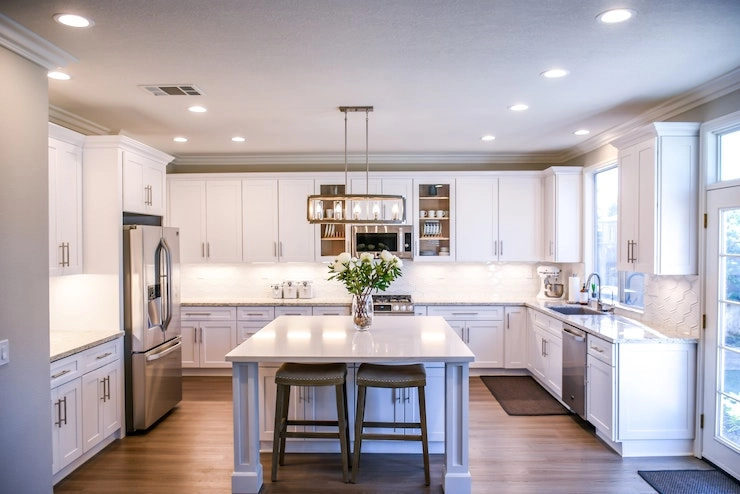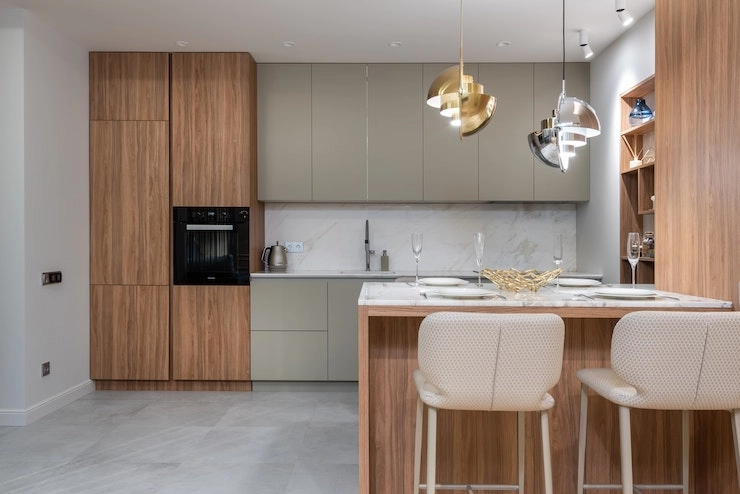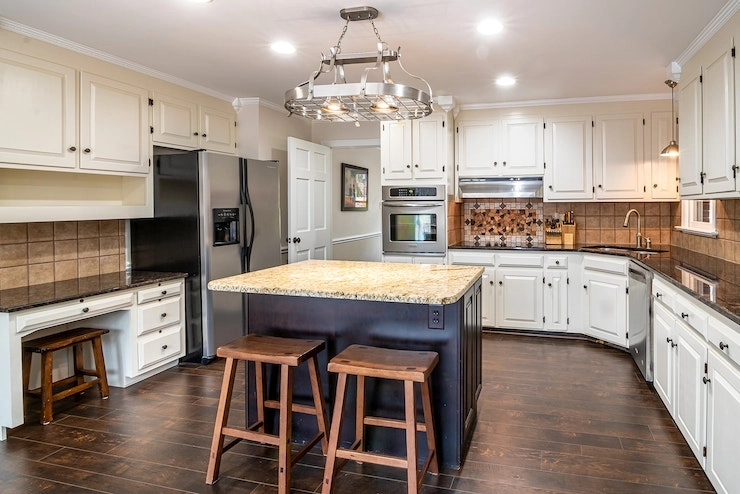Costly Installation
Hybrid Flooring Disadvantages: Installing hybrid flooring in your home or business is becoming increasingly popular. It offers a beautiful, long-lasting flooring option that can be customized to fit any space. However, one of the drawbacks to hybrid flooring is the costly installation. we suggest you read the Vinyl Hybrid Installation page for more details.
The cost of installing hybrid flooring depends on a number of factors, including the type of material you choose, the size of the area and the complexity of the installation. With so many factors and options, it’s important to know what to expect before you start planning your installation.
The first thing to consider is the actual flooring material. There are several types of hybrid flooring available, including solid wood, engineered wood, laminate, and vinyl. Each type has its own advantages and disadvantages. For example, solid wood flooring is more expensive than engineered wood, but it’s more durable and can last up to 25 years. Laminate and vinyl flooring are less expensive and easier to install, but they don’t have the same look and feel as solid wood.
Once you’ve chosen the flooring material, you need to consider the size and complexity of the installation. If you’re installing a small area, you can probably install the flooring yourself. However, if you’re installing a larger area, you’ll need to hire a professional installer.
Finally, you’ll need to factor in the cost of tools and materials. Installing hybrid flooring requires special tools and materials to ensure a proper installation. Depending on the size of the area and the complexity of the installation, the cost of these tools and materials can add up quickly.
The cost of installing hybrid flooring can be quite high, especially if you plan on a complex installation. It’s important to consider all of your options carefully in order to ensure that you get the best value for your money. While the cost of installation may be high, the benefits of having a beautiful, long-lasting floor are well worth the expense.
So, if you’re thinking about installing hybrid flooring in your home or business, make sure to do your research and consider all the options before making a decision. It’s also important to keep in mind the potential hybrid flooring disadvantages, such as the cost of installation, the difficulty of installation, and the possible lack of durability. With these factors in mind, you can make an informed decision and ensure that you get the best value for your money.

Potential Allergies
Hybrid flooring may be susceptible to allergens such as pollen, dust, pet dander, mold, and mildew. These allergens can be released into the air when the flooring is disturbed or when humidity levels are high. This can cause sneezing, coughing, watery eyes, and other breathing difficulties. If you have allergies, it is important to make sure your hybrid flooring is properly sealed to prevent the release of these allergens.
In addition, some hybrid flooring products use glues and adhesives that contain volatile organic compounds (VOCs). These compounds can be released into the air and can cause respiratory problems and other health issues.
It is also important to note that hybrid flooring can be difficult to clean. Since the materials are sealed together, it can be hard to get into the crevices and remove dirt, dust, and allergens. This can make it difficult to maintain a hygienic environment in your home.
These are just a few of the potential hybrid flooring disadvantages that you should be aware of before making a decision about your flooring. Remember, if you have allergies, hybrid flooring may not be the best choice for your home. Research your options thoroughly before making a decision, and make sure to discuss any potential allergies with your doctor or allergist before installation.

Limited Design Options
When it comes to flooring, homeowners have a wide array of choices. But, if you’re looking for a combination of design options, you may find yourself limited in your choices. Hybrid flooring, which combines the best of both worlds in terms of hardwood and vinyl, is certainly a popular option.
But, before you jump on the hybrid flooring bandwagon, it’s important to understand the potential disadvantages associated with this type of flooring. Knowing the potential drawbacks can help you make an informed decision when it comes to selecting the best flooring option for your home.
Not only does hybrid flooring require regular vacuuming and cleaning, but it can also be susceptible to scratches and dents if it is not well protected. As such, it is important to take special care when selecting hybrid flooring to ensure that it will remain in good condition over time.

Difficult Maintenance
Maintaining hybrid flooring can be a difficult task. If you’re considering installing this type of flooring in your home, it’s important to understand the drawbacks and advantages associated with it. Hybrid flooring is a combination of two different materials, such as tile and wood, that are fused together to create a unique look. While it can be a great choice for many homes, there are also a few disadvantages that should be considered before installing hybrid flooring.
One of the primary hybrid flooring disadvantages is the difficulty of maintenance. Unlike solid hardwood or tile floors, hybrid floors require extra time and attention when it comes to upkeep. You’ll need to regularly vacuum and mop the floor to keep it looking its best. Additionally, depending on the type of hybrid flooring you have, you may need to use special cleaning solutions and products to protect the floor from damage.
Overall, hybrid flooring can be a great option for many homes, but you should be aware of the disadvantages associated with it. Understanding the maintenance and cost of hybrid flooring can help you make an informed decision about whether or not it’s the right choice for your home.
Lack of Durability
One of the main hybrid flooring disadvantages is that it is not as durable as other types of flooring. Although hybrid flooring is made from a combination of materials, it is often not as hard-wearing as solid wood or vinyl. This means that it will not last as long as other options, and may require more maintenance or repairs over time.
Hybrid flooring is also more likely to show signs of wear and tear over time. Its layers are not as strong as those of other materials, so they can become scratched or dented more easily. This can mean that the flooring will need to be replaced or repaired sooner rather than later.
Another disadvantage of hybrid flooring is that it can be more expensive than other flooring options. Although it may initially be cheaper than hardwood or vinyl, it is more likely to require more costly repairs over time. This is especially true for areas of high foot traffic, where the flooring may require more frequent repairs or replacement.
Finally, hybrid flooring is not as environmentally friendly as other flooring materials. With its layers of material, it takes more energy to produce and install than other materials. Additionally, its components may not be biodegradable, so it is not always a great choice for those looking to reduce their environmental footprint.
Unsuitability for Wet Areas
When it comes to home improvement projects, one of the most important decisions you’ll make is choosing the right type of flooring. There are a variety of flooring options available, and each comes with its own advantages and disadvantages. If you live in a wet area, then you may need to consider hybrid flooring, but it’s important to understand the potential drawbacks associated with it before you make a purchase.
Hybrid flooring is a popular flooring option that combines the best of both hardwood and laminate flooring. It’s very durable and can look like real wood, without the added expense. However, one of the major hybrid flooring disadvantages is that it is not suitable for wet areas. Because of the construction of a hybrid floor, it is not able to withstand moisture, and therefore should not be used in areas where moisture can collect such as bathrooms and kitchens.
Water damage is one of the main hybrid flooring disadvantages, and it can be very costly to repair. The water can cause the boards to warp, swell, and eventually separate from the floor. This can be very expensive to repair, and can lead to further issues down the line.
In addition to water damage, hybrid flooring is prone to scratches and dents. Hardwood and laminate flooring tend to have tougher surfaces, which makes them more resistant to wear and tear. With hybrid flooring, however, the surface may be softer and more susceptible to damage. It can also be more difficult to repair any damage that does occur.
Finally, hybrid flooring is not as eco-friendly as hardwood or laminate. While it does provide a more natural look than laminates, hybrid flooring consists of some synthetic materials that are not particularly friendly to the environment. If eco-friendliness is important to you, then hybrid flooring may not be the best option. we suggest you read the Carpet supply and installation page for more details.
Overall, hybrid flooring can be a good option for many homeowners, but it’s important to understand its potential drawbacks, especially when it comes to wet areas. If you live in a wet area, then hardwood or laminate may be more suitable options. Nonetheless, it’s important to weigh all of your options before making a decision, and to make sure that you understand the potential hybrid flooring disadvantages before you invest in the material.

